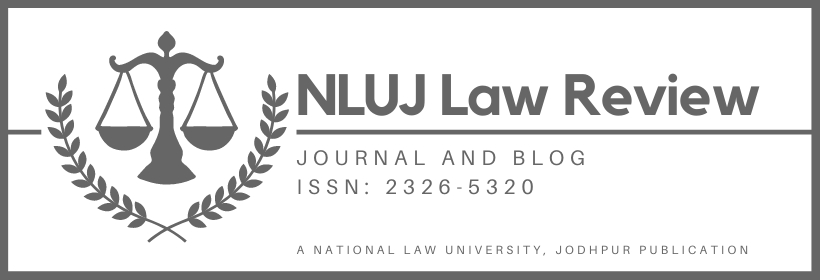The escalation of anti-competitive practices in the competition law regime necessitated the competition authorities to modify the existing competition framework. To create a robust competition structure, the Competition Commission of India (“CCI” or “Commission”), based on the recommendations of the Competition Law Review Committee (“CLRC”), introduced the draft Competition (Amendment) Bill, 2020 (“Bill”) in February 2020. The Bill proposed changes, both in substantive and procedural aspects of the law. Among other things, it aims to settle the conundrum persisting under the Competition Act, 2002 (“Act”) vis-à-vis vertical agreements by amending Section 3(4) of the Act. The limited and strict interpretation of Section 3(4) is standing as a roadblock in the current competition fabric. The Bill, by delving into Section 3(4) seeks to resolve its deficient applicability in considering cases of anti-competitive agreements.
Section 3 of the Act sets out prohibition on anti-competitive agreements which causes or is likely to cause an appreciable adverse effect on competition (“AAEC”). Even though the Act does not explicitly mention the terms ‘horizontal’ and ‘vertical’ agreements, it prohibits them nature under Sections 3(3) and 3(4) of the Act respectively. The Bill purposes to decipher the existing lacuna in Section 3(4) by expanding its horizon to include “other agreement” amongst enterprises or persons operating at different levels of production chain in different markets. In light of the above, the decision of CCI in the case of Ramakant Kini v. L.H. Hiranandani Hospital (“Ramakant Case”) becomes crucial to analyse.
The authors in this blog will critically analyse the interpretation of CCI provided in the Ramakant Case. The Competition Appellate Tribunal (“COMPAT”) though overruled the said ruling, failed to address the obscurity in the reasoning of the CCI. The authors shall, therefore, reflect how the CCI’s decision goes against the set precedents, scheme of the Act and settled principles of interpretation. Moreover, the authors stress upon the need for the draft Bill to facilitate the concerns arising in the e-commerce industry and urge on the exigency to include “other agreement” under Section 3(4) of the Act.
The Ramakant Case
The Commission in the Ramakant Case considered an exclusive agreement between Hiranandani Hospital and a stem cells bank, Cyrobanks International India (“Cyrobank”). On account of this agreement, Hiranandani Hospital did not allow one Mrs. Jain, who was taking maternity services from them to avail the services of “Life Cell” for stem cells banking. Mrs. Jain, who was in a prior agreement with Life Cell had to shift from the Hiranandani Hospital to another hospital for her delivery. Thus, the informant approached the CCI against the anti-competitive and abusive behaviour of the Hiranandani Hospital. The Commission held the exclusive agreement between the Hiranandani Hospital and Cyrobank as anti-competitive under Section 3(1) of the Act [Ramakant Case, ¶26]. However, this exhaustive application of Section 3(1) by the Commission raised certain legal ambiguities regarding the scope and applicability of anti-competitive agreements scrutinised under the Act.
1. Standalone Applicability of Section 3(1)
The Ramakant Case brought into light the independent applicability of Section 3(1) by observing that horizontal and vertical agreements are merely a sub-species of anticompetitive agreements and are in no way exhaustive of the scope of this Section [Ramakant Case,¶11]. Thus, the agreements which do not fall within the strict purview of Sections 3(3) and 3(4) will fall under the residual category of Section 3(1). This standalone interpretation of Section 3(1) came as a contradicting move to the previous orders of the Commission. The interpretation in Ramakant Case rejected the principle propounded in Govind Agarwal v. ICICI Bank Ltd. [¶19.5], wherein it was held that Section 3(1) cannot be evoked independently. Further, in NK Natural Foods Pvt. Ltd. v. Akshaya Pvt. Ltd., the Commission observed that “agreements under Section 3 are held anti-competitive only if they create market distortions by causing an appreciable adverse effect on competition either through concerted action of horizontally placed enterprises or through agreement between or among vertically placed enterprises”.
2. Rules of statutory interpretation
The standalone applicability of Section 3(1) though broadened the scope of this Section, it made the existence of other clauses of the Section futile. The dissenting opinion of the Commission highlighted the flaw in the liberal interpretation of Section 3(1) made by the majority. The rules of statutory interpretation require all clauses of a section to be read holistically. The majority opinion went against the settled legal principles and interpreted the general provisions independently against the specific one, which in turn made the specific provisions infructuous.
3. Burden of proof
The Commission in Ghanshyam Dass Vij v. Bajaj Corp. Ltd., observed that in cases of horizontal agreements, Section 3(3) raises a presumption regarding the appreciable adverse effects of the agreement. No such presumption of AAEC is raised in the case of agreements falling under Section 3(4), and the burden of proof lies on the CCI [Ramakant Case, ¶10]. Thus, in cases where an agreement is neither horizontal nor vertical, but still falls within the scope of Section 3(1) of the Act, the legislative scheme does not make it clear as to who will discharge the initial burden of proof. The Ramakant Case, therefore, pointed out a much bigger problem of the Act’s failure to accommodate those agreements which do not strictly classify as either horizontal or vertical.
E-commerce and anti-competitive agreements
Unlike brick-and-mortar stores, the e-commerce industry has no geographical limits. The competition concerns arising in the e-commerce market adversely affect the present landscape of competition law. Further, there had been numerous instances in the recent past where the scope and ambit of the Act failed to cater to the anti-competitive agreements arising in the digital markets. In Jasper Infotech Pvt. Ltd. v. KAFF Appliances Pvt. Ltd., the Commission noted that Resale Price Maintenance can be committed even in the absence of a conventional act of “resale”. The Commission observed that the same customary structure cannot be applied in cases of online markets wherein, though there is no literal possession of goods, there exists a transfer of ownership from buyer to seller [¶37]. Hence, it highlighted the problem of customary applicability of provisions in non-conventional situations and sought a broader understanding of Section 3(4) to avoid such situations in future.
Pertinently, the CCI scrutinised the vertical agreement between Apple and Airtel/Vodafone in the case of Sonam Sharma v. Apple Inc., wherein the Commission examined the existing agreement as a tie-in arrangement under Section 3(4). The nature of the agreement, in this case, was similar to the Ramakant Case, however, the Commission deflected from its view in the latter and enforced Section 3(1) independently. This deviation of the Commission raises serious doubt on the stand of CCI concerning anti-competitive agreements. These instances, thereby, call attention to the ambiguity in CCI’s perspective and demands for a better solution to remove the same.
Furthermore, the Commission in K. C. Marketing v. OPPO Mobiles MU Pvt. Ltd., while considering the claim of exclusive distribution agreement observed online and offline markets as two different channels of the same market. However, the Commission developed its view in All India Online Vendors Association v. Flipkart India Pvt. Ltd., and a separate relevant market was delineated for online platforms. These cases indicate that the Commission is considering the need to evolve from its conventional approach, but the Act fails to brace it. Therefore, the advent of the Bill will make it easier for the Commission to find the support of the Act which will usher more clarity in the investigation procedure of vertical agreements and bring the anomaly regarding e-commerce cases on hold.
Vertical agreements across other jurisdictions
The European Commission Guidelines on Vertical Restraints confers that vertical restraints are generally less harmful than horizontal restraints and may provide substantial scope for efficiencies in the market [¶6]. The European Commission (“EC”) every now and then has interpreted the term “agreement” widely. Pertinently, in Bayer AG v. Commission, the EC stated that for a restriction to be reviewed under Article 101, there must be a “concurrence of wills” between two parties to conclude the relevant restriction. Thus, it is not necessary that a written agreement must exist between the parties. Further, in Grundig-Verkaufs-GmbH v. Commission, it was opined that Article 101 of the Treaty on the Functioning of the European Union does not lay down any distinction between horizontal and vertical agreements and applies to all agreements which distort competition in the market [¶339]. Additionally, countries such as the United Kingdom and Singapore also do not make any distinction between horizontal and vertical agreements.
Similarly, the United States antitrust regulators, the Federal Trade Commission and the Antitrust Division of the Department of Justice have employed ‘rule of reason’ to assess vertical agreements. Under the rule of reason approach, the totality of facts and circumstances surrounding the agreement is considered, including “any other related agreements” that affect competition. In such a way, the US antitrust regime has a broader understanding of vertical agreements which is not restricted to any specific categorisation.
Conclusion
A perusal of the above makes it clear that the draft Bill is a welcome step to the present framework, as it will not only stretch the scope of Section 3 but will also cater to the agreements that do not strictly fall under the set parameters of horizontal and vertical agreements. Further, the amendment will end the confusion of standalone applicability of Section 3(1) created by the Ramakant Case as all other agreements except horizontal agreements will fall under Section 3(4). Likewise, it will resolve the existing or potential ambiguity surrounding the burden of proof as the CCI will bear the burden of proof in all cases except those falling under Section 3(3).
Furthermore, the present Bill can also be construed in light of the e-commerce industry as it assists to remove the inadequacy and insufficiency of the CCI in assessing anti-competitive agreements in the digital markets. It will aid CCI to disregard its current fit squarely approach for the anti-competitive concerns arising in the e-commerce sector. Along these lines, the agreements in the e-commerce market will no longer have to abide by the strict classification provided under Section 3(4) to fall into the category of vertical agreements.
Moreover, the Bill will augment the investigative powers of the Commission to assess a wide range of anti-competitive agreements that may have AAEC. Therefore, the authors are of the view that the amendment in Section 3(4) is a desirable move to remove the vagueness in the current realm of anti-competitive agreements.
This article has been authored by Ayushi Dubey and Yash Jain, students at Institute of Law, Nirma University, Ahmedabad.



